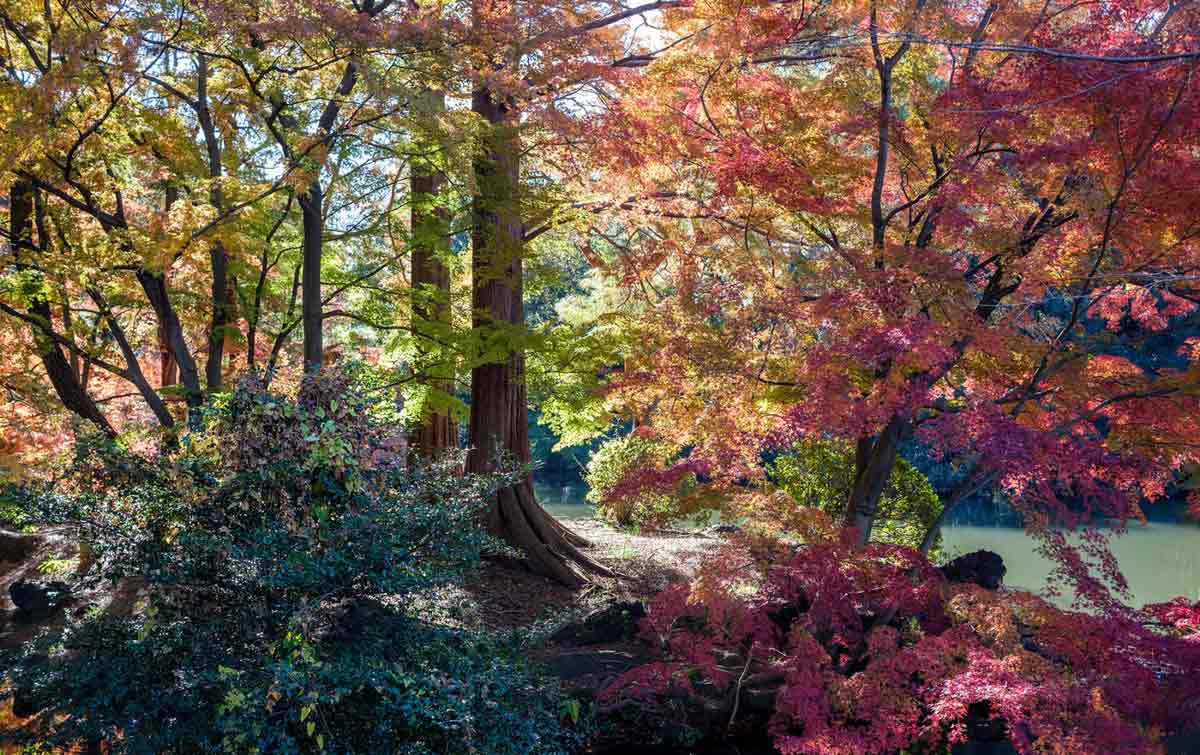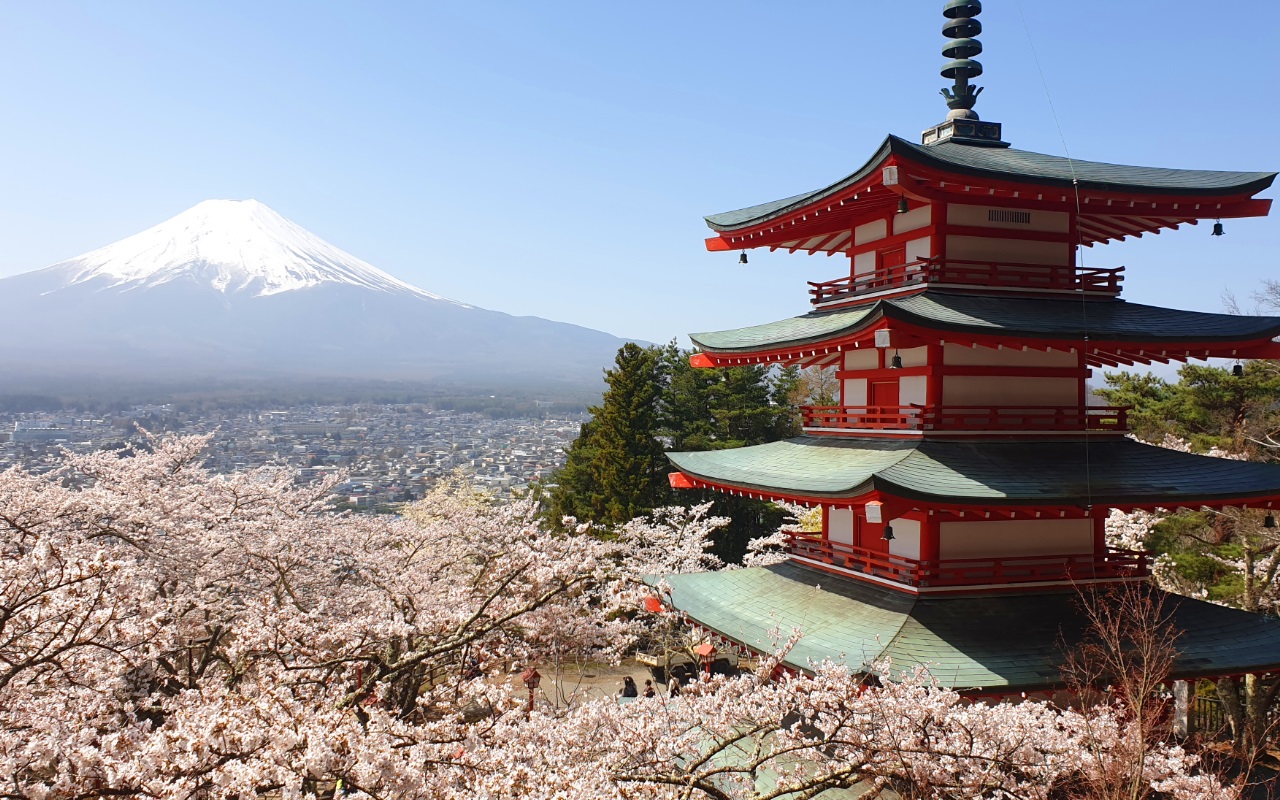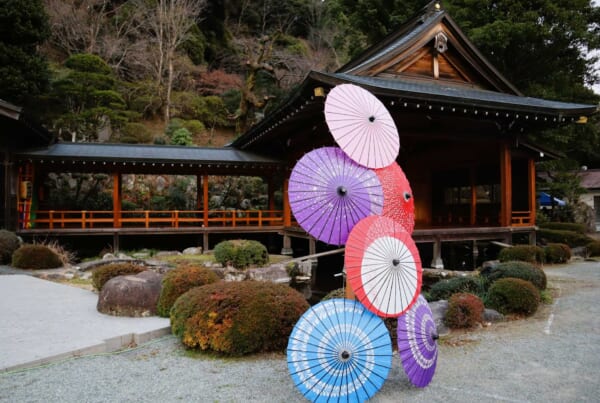Tokyo is one of the most underrated fall color viewing destinations in Japan. The city is home to some marvelous nature destinations making it a very atmospheric destination to experience some of the best of the koyo autumn leaves season in Japan.
Each park and garden in Tokyo offers a different autumn foliage viewing experience. Shinjuku Gyoen, surrounded by some of the highest buildings in Tokyo, provides a great combination of fall colors, nature, and urban scenery. Japanese-style gardens such as Koishikawa Korakuen and Rikugien Garden offer a novel-like atmosphere, especially at night if there is an illumination event. There are also parks like Mizumoto Park located in Katsushika, my favorite fall colors viewing spot in Tokyo, where one can easily forget that they are still in one of the 23 wards of Tokyo.
When is the Best Time See the Fall Colors in Tokyo?
When people ask me when is the best time to visit Tokyo, my answer is always the same: November. The weather is often still pleasant and dry enough. But more importantly, it is the month when the city welcomes the koyo season — autumn colors season in Japan.
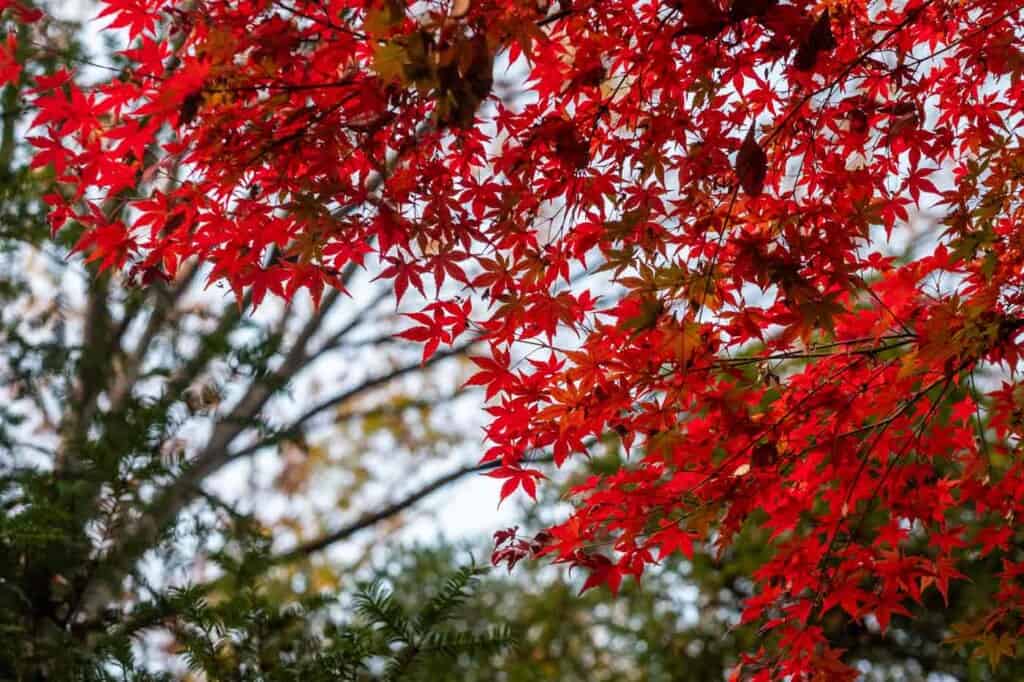
In Tokyo, the trees start to change colors in mid-November. The best time to view the fall colors in Tokyo is usually the two weeks covering the last week of November and the first week of December when the autumn colors are at their peak. If you are in the city a little earlier, some of the popular fall color viewing spots in Tokyo, such as Showa Memorial Park and its ginkgo trees, greet the peak autumn colors a little earlier than the rest of Tokyo in around mid-November.
Best Places to See the Fall Colors in Tokyo
Starting in mid-November, my days are usually shaped not by the weather forecast by the Tokyo fall colors forecast. Since the peak colors season lasts for around a week or two in Tokyo, I usually cover all my favorite destinations in a single day and then repeat it all over again until the leaves get brown and finally fall off the trees in mid-December.
Shinjuku Gyoen: Mesmerizing Fall Colors in the Middle of Tokyo
I always visit Shinjuku Gyoen – one of the most popular autumn foliage spots in Tokyo – early in the morning, right after it opens at 9 am. As soon as I enter the park, I quickly walk to Shimono Ike Pond to check the color situation at my favorite tree, the colorful branches that often stretch out to the pond surface. The tree – which I call “my koyo tree” – is as iconic in my eyes as the famous Jomon Sugi of Yakushima or Wanaka Tree of Wanaka in New Zealand.
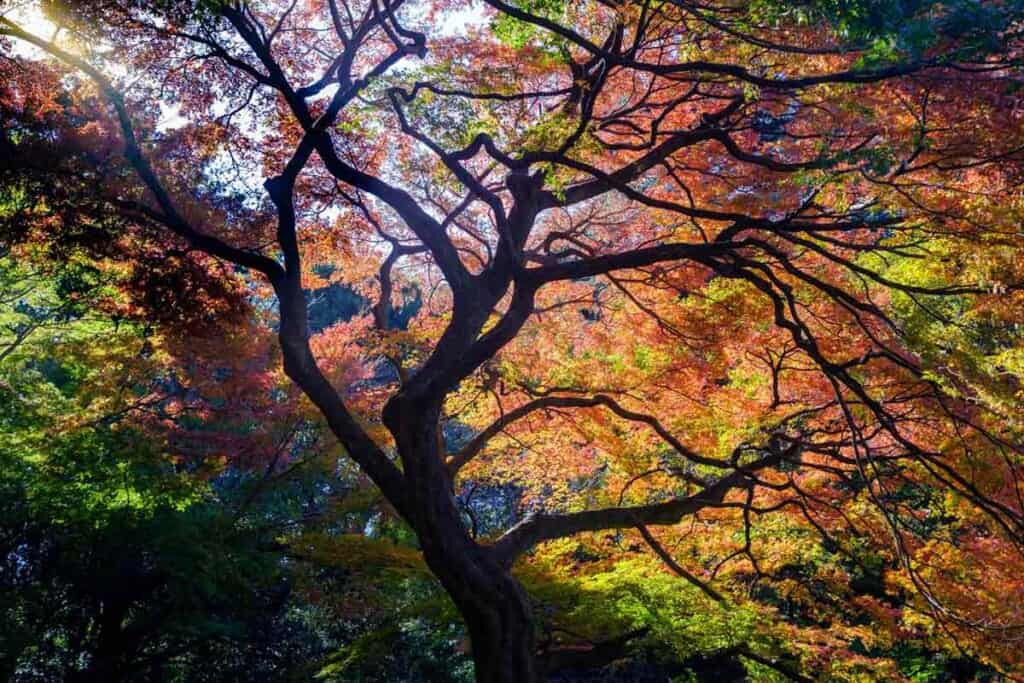
Several other ponds in Shinjuku Gyoen and picturesque bridges allow the visitors to capture the perfect fall colors postcard-like scenery.
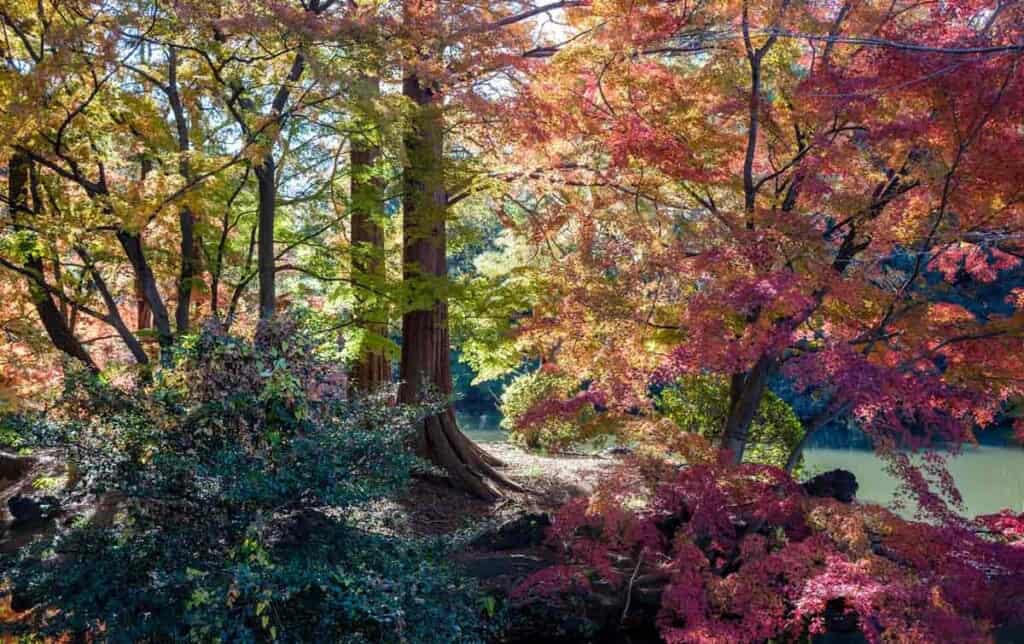
| Shinjuku Gyoen Garden Website |
| Entrance Fee: 500 JPY |
| Opening Days & Hours: 9:00-16:00; Special opening period (open all year round during the period); Spring: March 25 – April 24; Autumn: November 1 – 15; Every Monday (if Monday is a holiday, the following weekday) |
| Nearest Station: Shinjuku-Gyoenmae Station (新宿御苑前); 5-minute walk from Exit 1 |
| Transportation: It takes approximately 3 minutes from Shinjuku Station, 10 minutes from Shibuya Station, and 15 minutes from Tokyo Station to reach Shinjuku-Gyoenmae Station. |
Koishikawa Korakuen Gardens: A Pond, a Tea House, and Maple Trees
After attending worldly obligations such as work or school, I often visit Koishikawa Korakuen located in Bunkyo in the late afternoon. It is one of the oldest traditional Japanese gardens located in Tokyo, and it is worth a visit every season (also famous for plum viewing) but especially during the koyo autumn leaves season in Tokyo. Maple trees surround the two ponds in the garden, which is also home to a large ginkgo tree.
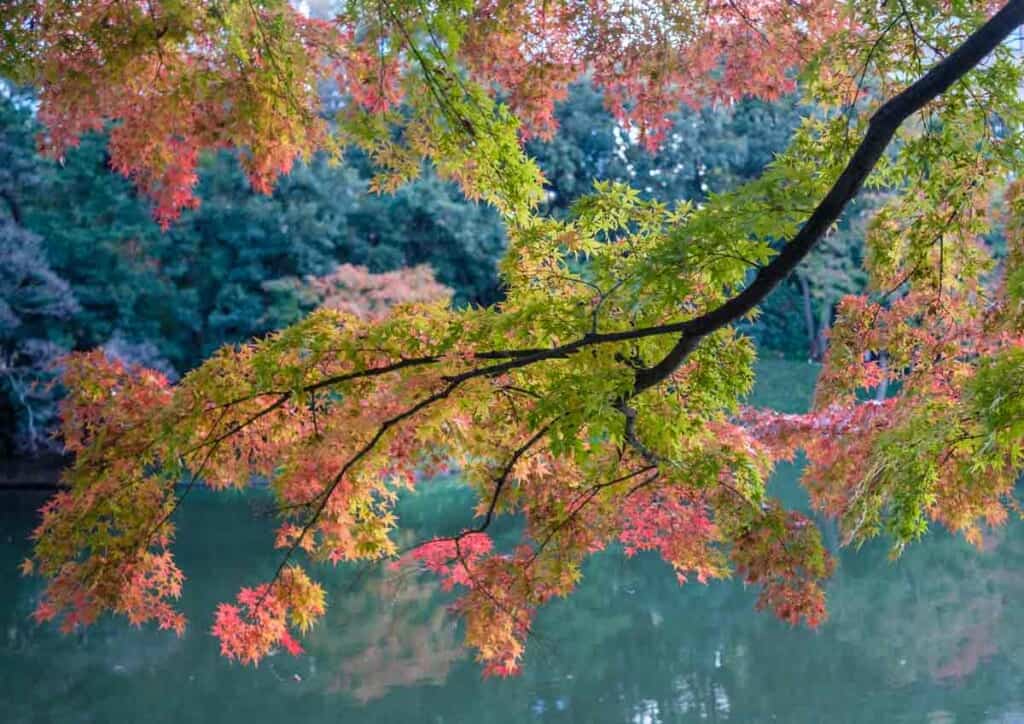
Kantoku-tei tea house located within the premises of the Koishikawa Korakuen Garden makes for a nice stop to enjoy tea to do both people and autumn colors watching.
| Koishikawa Korakuen Garden Information |
| Entrance Fee: 300 JPY |
| Opening Hours: 9:00- 17:00 (admission until 16:30) |
| Nearest Station: Iidabashi Station on the Toei Oedo Line; 3-minute walk from Exit C3 |
| Transportation: It takes approximately 12 minutes from Shinjuku Station, 17 minutes from Shibuya Station, and 11 minutes from Tokyo Station to reach Iidabashi Station. |
| Note: In order to prevent the spread of the coronavirus, Koishikawa Korakuen Garden has introduced a numbered ticket reservation system. Reservations can only be made online. |
Rikugien Garden: View the Fall Colors at Night
I often visit Rikugien Garden, also located in Bunkyo ward of Tokyo right before it gets dark, and stay for the autumn colors illumination event that occurs nightly between mid-November and early December.
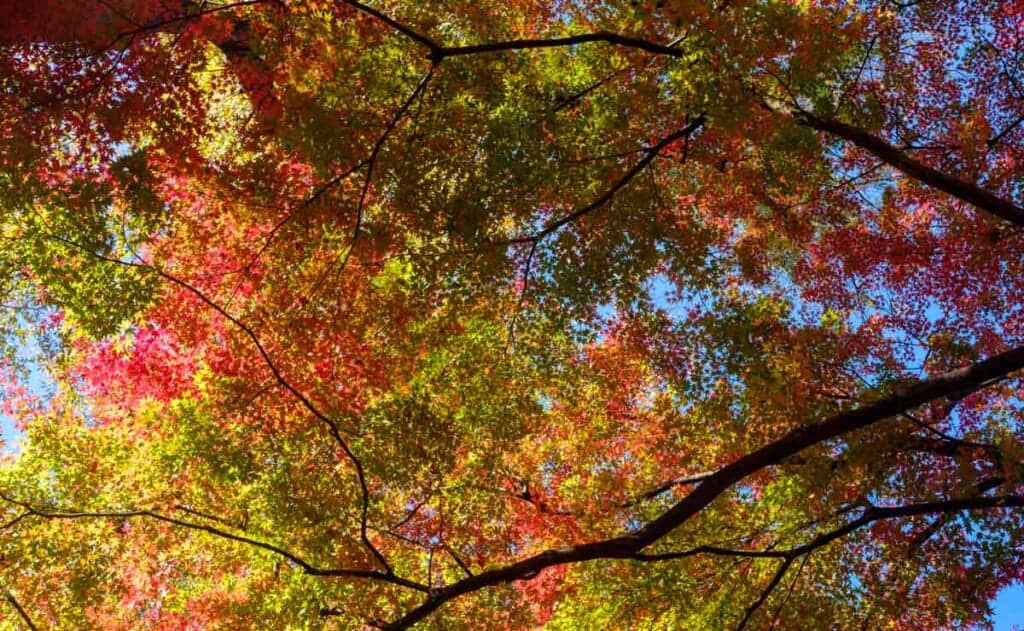
The park is home to ponds, walking paths, and hills that embrace a novel-like atmosphere at night. It is often my experience that if the illumination is not implemented tastefully, it can quickly kill the atmosphere and turn any place into a theme park. The nighttime lighting at Rikugien Garden is applied so tastefully that it allows me to experience a few hours of feeling like how it would be to live in old-time Tokyo while taking a night stroll.
| Entrance Fee: 300 JPY |
| Opening Hours: 9:00-17:00 (Admission until 16:30) |
| Nearest Station: Komagome Station |
| Transportation: It takes approximately 16 minutes from Shinjuku Station, 22 minutes from Shibuya Station, and 17 minutes from Tokyo Station to reach Komagome Station. |
Mizumoto Park: Largest Park in Tokyo
I have to admit that I may be biased towards the largest public park in Tokyo. Mizumoto Park is within a 15-minute bike ride from my home and is one of the main reasons I intend to never leave my current home in Tokyo. Mizumoto Park, located in Katsushika, is so large that you will often forget that you are still in one of the 23 wards of Tokyo. The park is very popular during the sakura season, but it is equally mesmerizing during the autumn foliage season in Tokyo.
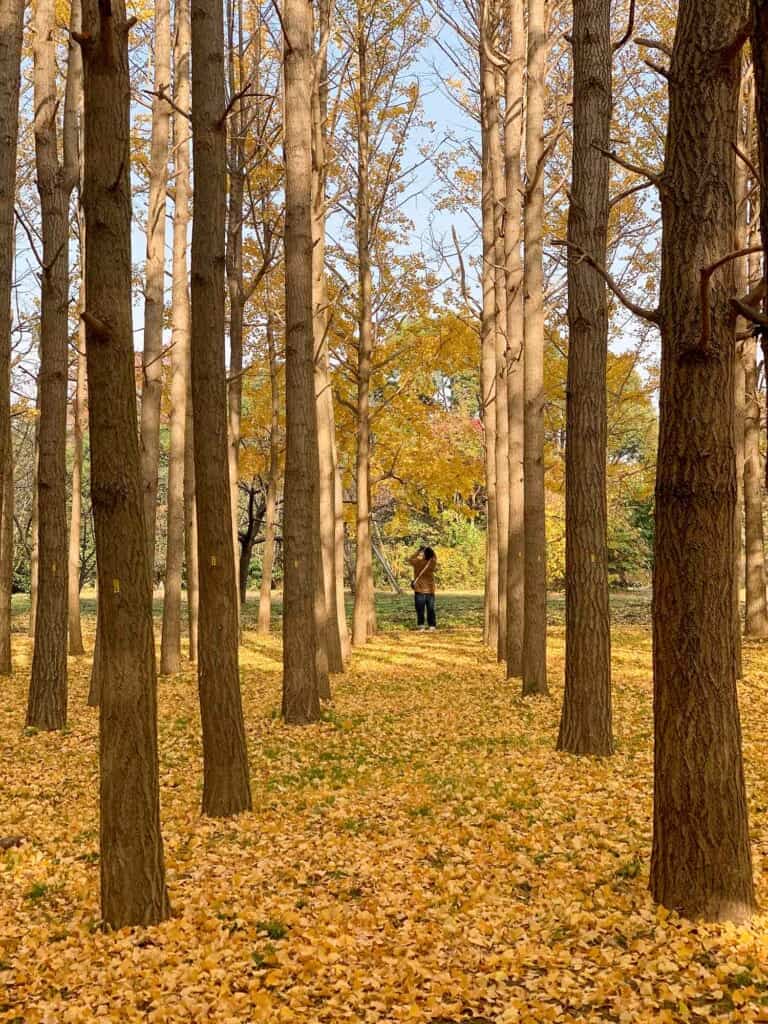
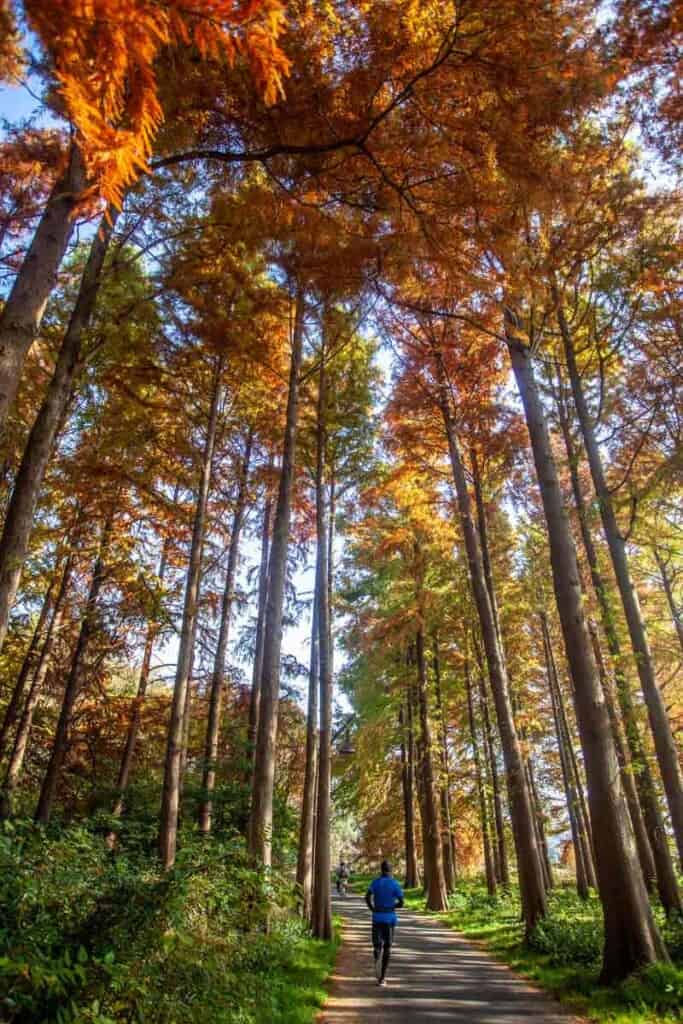
The park is divided by a large pond and has a dedicated birdwatching corner making it a popular spot for bird photographers. I often pack and eat my lunch at the wooden tables spread out through the park, though you can also sit in one of the nearby cafes for drinks and a simple lunch.
| Mizumoto Park Information |
| Entrance Fee: No fee |
| Opening Hours: Open all day |
| Nearest Station: Mizumoto Koen Bus Stop; 7-minute walk |
| Transportation: It takes approximately 40 minutes from Shinjuku Station, 45 minutes from Shibuya Station, and 31 minutes from Tokyo Station to reach Kanamachi Station. From Kanamachi Station, take the Keisei Bus (bound for Togasaki Yard or Nishi Mizumoto 3-chome) and get off at Mizumoto Koen Bus Stop. |
Showa Memorial Park: The Most Picturesque Ginkgo Avenue in Japan
Showa Memorial Park, located in Tachikawa, is a little further than the city center compared to the other fall colors viewing spots listed above, though it is equally deserving of a visit. The park welcomes the peak fall colors a little earlier than most other places in Tokyo. Therefore, I often visit the park in mid-November. I prefer the ginkgo alley at Showa Memorial Park over the more famous Jingu Gaien Ginkgo Avenue located in the Aoyama district of Tokyo as there are no cars that pass by.
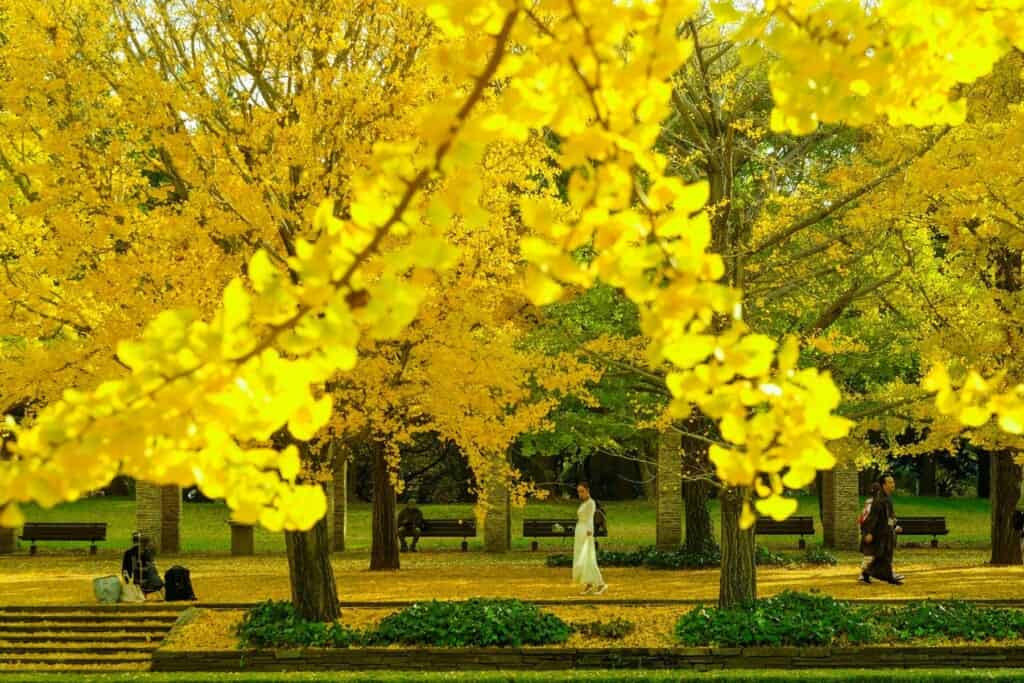
Showa Memorial Park is 40 minutes away from Shinjuku by train, but if you can visit by bike, there are dedicated bike lanes within the park. The park is so large that I often feel like I am always missing something — something I can look forward to discovering on my next visit to the park.
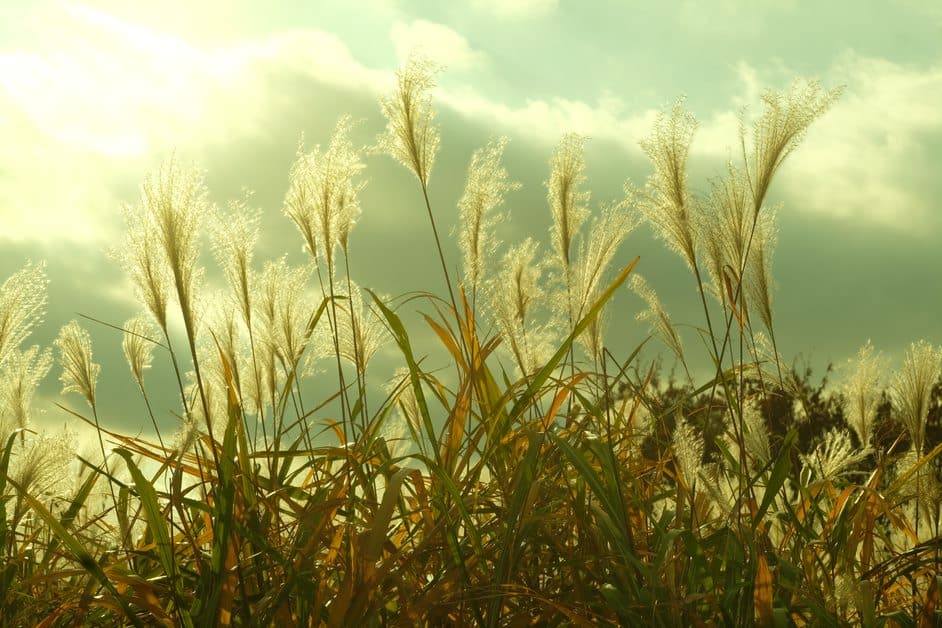
| Showa Kinen Park Website |
| Entrance Fee: 450 JPY |
| Opening Hours: 9:30 – 17:00, March 1 – October 31; 9:30 – 16:30, November 1 – end of February |
| Nearest Station: Nishi-Tachikawa Station; 2-minute walk |
| Transportation: It takes approximately 30 minutes from Shinjuku Station, 40 minutes from Shibuya Station, and 50 minutes from Tokyo Station to reach Nishi-Tachikawa Station. |
Access to the Autumn Colors Destinations in Tokyo
All of the parks and gardens that I listed above are easily accessible by train/metro from any of the major train stations in Tokyo. If you have a chance, it is best to visit Mizumoto Park and Showa Memorial Park by bike to get the best out of these two vast parks with various koyo viewing pockets within.
These are just some of the spots that I visit each year to experience the fall colors in Tokyo, but there are many more parks and gardens in the largest city in Japan to enjoy the autumn leaves season.


